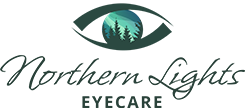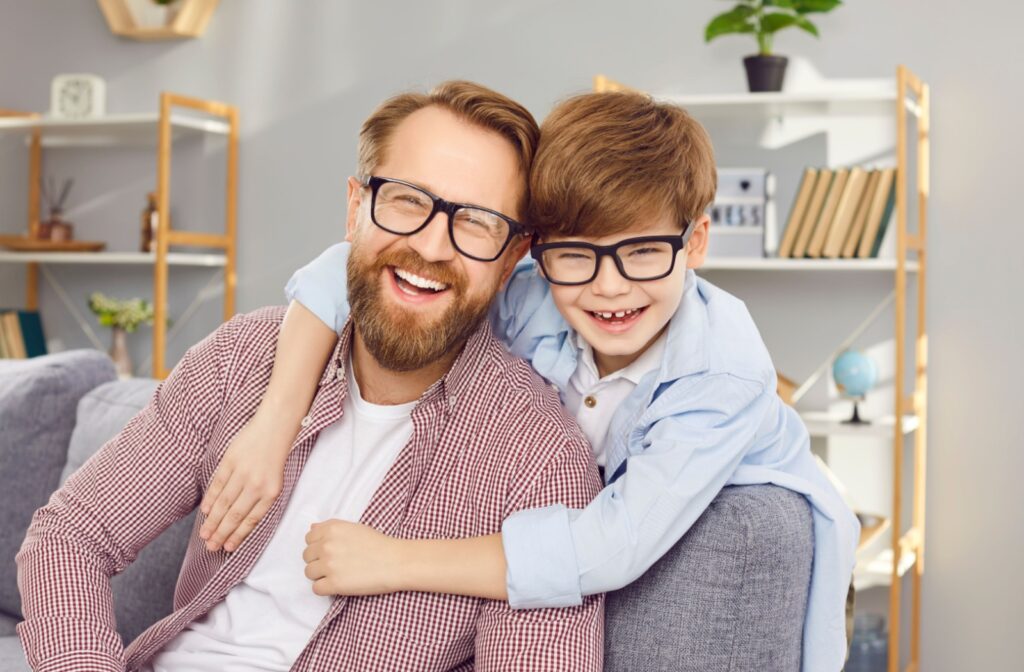If you’ve been diagnosed with myopia or nearsightedness, you might wonder if not wearing glasses could worsen the condition. The truth is that not wearing glasses is not known to worsen myopia directly, but it could cause other complications, such as eye strain or reduced visual quality.
Contact Northern Lights Eyecare if you have any questions about myopia and the different treatment plans available.
What is Myopia?
Myopia is an eye condition in which nearby objects appear clearly, but distant objects are blurry. Myopia results from the eyeball being too long or the cornea being too curved, which impacts how light focuses on the retina. Typically beginning in childhood, Myopia affects about 30% of the Canadian population and is on the rise.
Symptoms of Myopia
Here are some of the common symptoms of myopia:
- Blurry vision when looking at objects farther away
- Headaches
- Eye strain
- Squinting
- Close objects appear clear
How Glasses Work For Myopia
Prescription glasses or contact lenses correct the refractive error caused by Myopia, helping to bend light so that it focuses properly on the retina. This results in clear vision.
However, glasses or contacts don’t actually cure myopia; they only counteract the refractive effects that result in poorer vision. Nonetheless, vision correction does help people see clearly and makes it easier to perform everyday tasks such as reading, watching movies, or playing sports.
Does Not Wearing Glasses Really Worsen Myopia?
A common misconception about wearing glasses is that it will worsen your eyesight over time. This is not strictly true, though the long-term effects of going without glasses can depend on a few factors.
What Happens If You Don’t Wear Glasses?
One potential downside of not wearing glasses is eye strain and the discomfort that results from your eyes working harder to focus. Although there’s no clear evidence that not wearing glasses will cause your eyes to worsen, it can interfere with other activities and experiences.
Children with myopia who don’t wear glasses might experience difficulties with learning and development at school because they cannot see clearly. If myopia control glasses are prescribed for children, they should be worn, as not wearing them means that they will no longer be able to slow myopia progression.
Myopia is linked to genetics and environmental factors such as prolonged screen time or insufficient outdoor activities rather than the presence or absence of corrective lenses.
Does It Impact Lifestyle and Eye Health?
Even if skipping glasses doesn’t accelerate myopia, it can still result in some other issues that might be best avoided:
- Eye strain and fatigue: Constant squinting to see distant objects can lead to stress on the eye.
- Poor academic or work performance: This can be especially true for students trying to see the board at school.
- Safety concerns: Activities such as driving or riding your bike can be more challenging with vision concerns.
- Potential for headaches: Overexertion of the eye while trying to focus can result in some discomfort in the head.

Myopia Management Options
With myopia on the rise, it’s also increasingly common in children, and early methods of treatment and management can make a big difference. In addition to wearing glasses, here are a few strategies to prolong the progression of the condition:
Encourage Outdoor Activities
Spending time outdoors in natural light has been shown to promote healthier eye growth and slow myopia progression in children. Outdoor activities can benefit vision and support overall well-being, making them important to a healthy routine.
Limit Screen Time
Excessive use of digital devices and prolonged screen time can strain your eyes unnecessarily. That’s why we recommend implementing screen breaks, such as practicing the “20-20-20” rule during screen-heavy tasks—look away from the screen every 20 minutes at something 20 feet away for at least 20 seconds.
Prescription Glasses & Contact Lenses
Glasses and contact lenses are the most common tools for managing myopia. Glasses are an easy, non-invasive option that corrects vision while providing additional eye protection. Contact lenses, on the other hand, offer a more natural field of vision and are ideal for those who prefer to be glasses-free.
Specialized Multifocal Lenses
Specialized lenses like MiyoSmart change how light is focused on the eye, slowing the progression of myopia in children. In fact, MiyoSmart lenses have been shown to slow myopia by an average of 60%.
Atropine
Atropine is an eye drop medication that an optometrist may use to dilate the pupil during an examination. It has minimal side effects and risks for children and adults. Low doses have been determined to be a potential option for slowing myopia progression in children.
Orthokeratology
Orthokeratology (ortho-k) is a noninvasive form of cornea therapy that uses rigid contact lenses to reshape the cornea and correct refractive issues gradually. Typically, the lenses are worn overnight and can be removed during the day. In children, ortho-k has also been shown to reduce myopia progression.
Attend Regular Eye Exams
Regular eye exams are a great way to maintain good vision health. We strongly recommend consistently scheduling visits with your eye doctor to screen for various health conditions, including myopia and glaucoma.
Schedule an Appointment Today
If you think you might have Myopia or are experiencing symptoms such as blurry vision or eye strain, it’s important to address these issues early. Regular eye exams can help diagnose and manage Myopia, preserving your vision and eye health. Don’t hesitate—book your next eye exam with Northern Lights Eye Care today!


